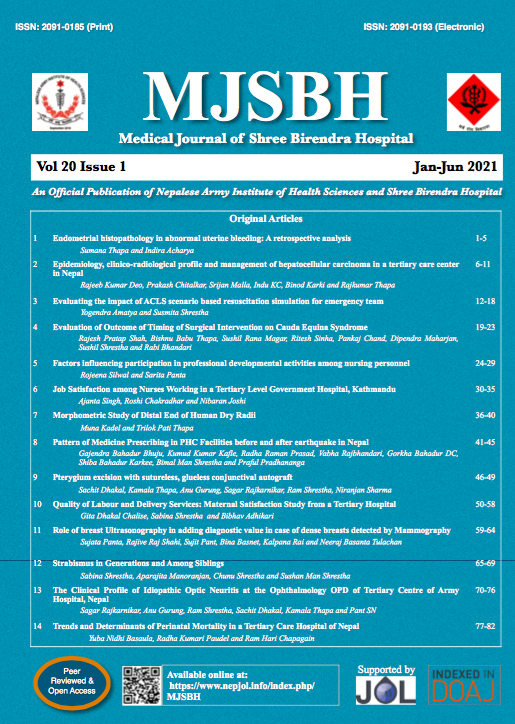Evaluation of Outcome of Timing of Surgical Intervention on Cauda Equina Syndrome
Keywords:
Key words: Back pain; Cauda Equina Syndrome ; Disability; VASAbstract
Introduction: Cauda equina syndrome (CES) is a rare clinical entity caused by compression of lumbar and sacral nerve roots resulting in various neurological dysfunctions. Early diagnosis of the syndrome and timely intervention is required to prevent permanent disability.
Methods: This is a retrospective study conducted from January 2013 to December 2017 in a tertiary care centre in Kathmandu, Nepal. All the cases meeting the inclusion criteria were included in the study. Patients were operated using posterior open discectomy and the outcome was evaluated at two weeks , one month, three months, six months and one year.
Result: Total number of patients meeting the inclusion criteria was 10, two females and eight males with a mean age of 40.30 + 6.58 years. The mean time for onset of symptom to timing of surgery was 142 hrs. VAS for leg improved from 5.90 + 0 .738 to 0.70 + 0.483 and VAS for back pain improved from 3.20 + 1.476 to 0.5 + 0.572 post operatively. There was improvement in sensory and motor function in all the cases. Bowel and bladder function improved in all the cases postoperatively at the time of final follow up. Sexual function was impaired in six patients preoperatively but postoperatively four had improved and two patients had poor result at the time of final follow up.
Conclusions: Timing of surgery may not be the most important determining factor for the outcome of the CES. Surgical decompression in delayed presentation have good clinical outcome in CES.
Downloads
Downloads
Published
How to Cite
Issue
Section
License
This license enables reusers to distribute, remix, adapt, and build upon the material in any medium or format for noncommercial purposes only, and only so long as attribution is given to the creator.




